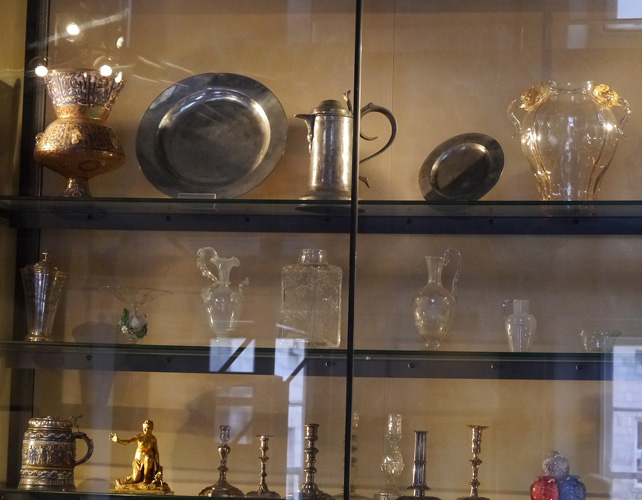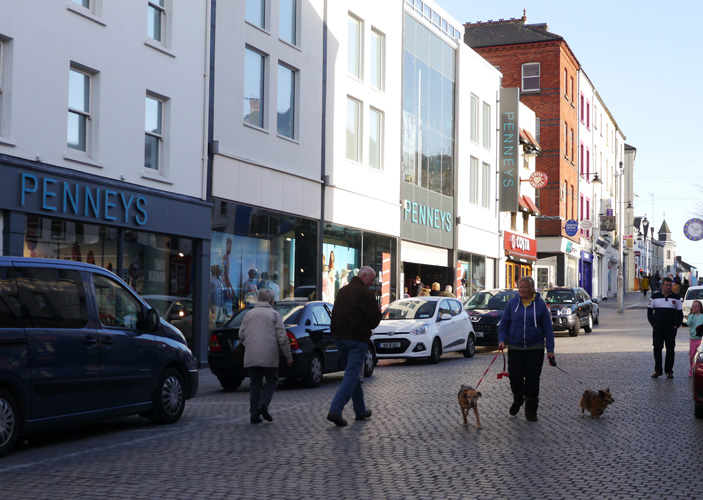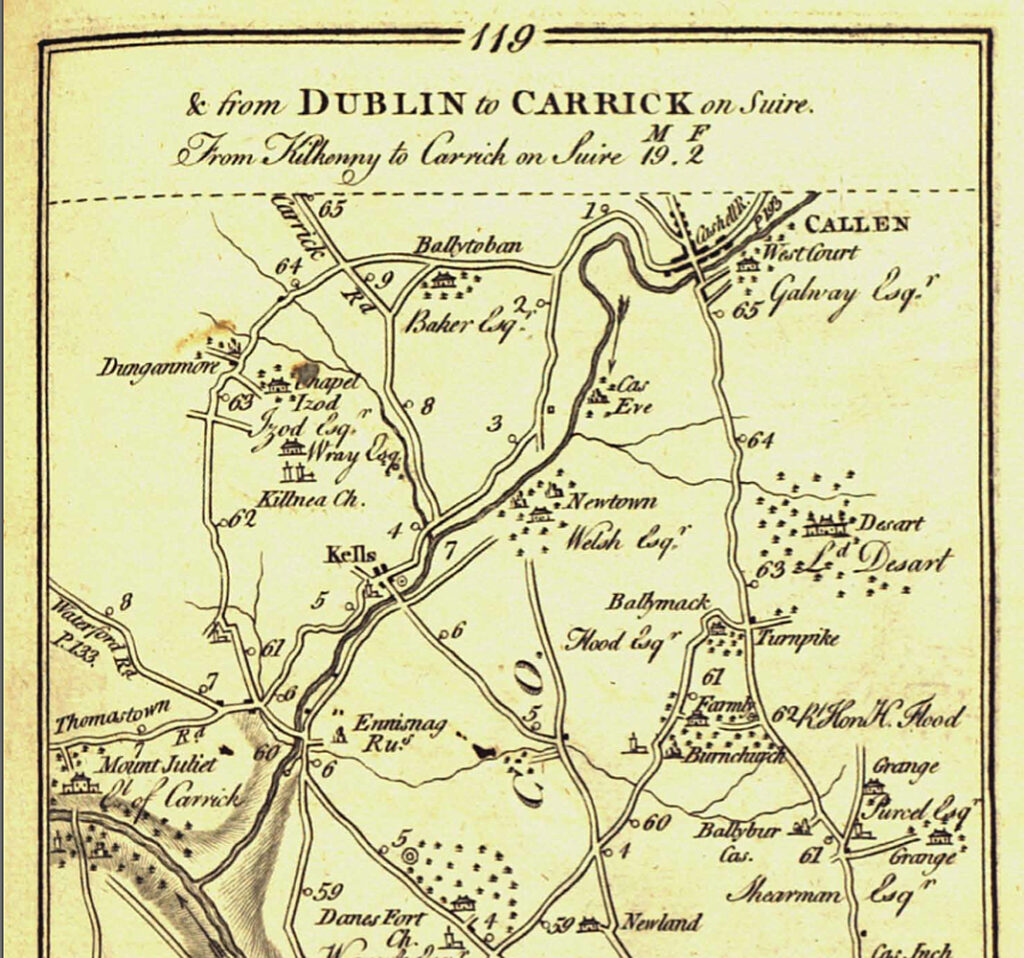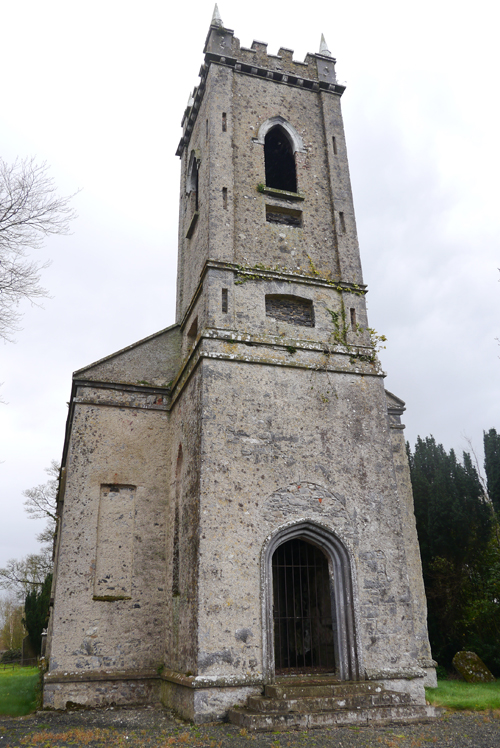If you google Charles Clark Waterford pewter, you may see some ads on ebay for antique dishes made by this Irish pewter manufacturer in the early 1800s. You may find his name in my blog post about the Shearman family, and you may also come across a 2009 post on RootsWeb by Lorraine Elliott, looking for more information about him.
Earlier this year, Lorraine, who is descended from Clarke’s grandson Robert Clarke Shearman, got in touch with me. Charles Clarke was an ancestor to both of us. I’m descended from his granddaughter Martha Bagnall Shearman, who immigrated to Canada in 1847. Robert, who was Martha’s brother, settled in New Zealand.
Lorraine did some research on Clarke and discovered quite a bit about his professional accomplishments, although his personal life and family connections are still something of a mystery.

Charles Clarke ( – 1830) was a Waterford ironmonger and brass founder as well as a maker of pewter flat ware in this ancient city in southeast Ireland. He was active in metallic crafts from at least 1788 until his death.
An advertisement in the Waterford Mirror on June 8, 1807, advised Charles’ customers that he made plumbing supplies and sold tea and coffee urns. Ten years later, the same newspaper reported that his factory had made a beautiful set of wrought iron gates, “a model of lightness, simplicity, strength and elegance,” for the Chapel Yard at Craig in nearby County Kilkenny. His foundry designed and made bells for many of Waterford’s churches, and he made stills, condensers and brewing coppers for the distilling and brewing industries.
He may have been in the family business. Waterford Streets Past and Present lists Nehemiah & William Clarke, Brass Founders, Braziers and Engine Makers on Peter Street in 1788. There is also a solo listing for William Clarke. Pigot’s 1824 City of Dublin and Hibernian Provincial Directory listed Terence Clarke, hardwareman and ironmonger, on Waterford Quay. How these people may have been related to Charles is unknown.
Charles was located on Barronstrand Street by 1790, with what appears to have been a household ironmongery shop at the front of the building and a foundry and a factory in the rear. He lived nearby at 38 Barronstrand Street.

The year 1782 was an eventful one in Ireland, with members of the Irish volunteer militia forcing the British government, which then ruled Ireland as a colony, to make Ireland an equal partner. These attempts at reform soon failed, and political unrest continued throughout Charles’ life. Meanwhile, on Dec. 18, 1782, The Dublin Hibernian Journal announced the marriage of “Mr. Charles Clarke of Peter St. to Miss Bennett, late of Bath.” Bath is located in southern England, across the Irish Sea from coastal Waterford.
Charles had at least two daughters, Charlotte and Arabella, however, the girls may have been half-sisters. It is likely that Charlotte Bennett Clarke — the mother of both Martha Bagnall Shearman and Robert Clarke Shearman — was the daughter of Charles Clarke and Miss Bennett. A retrospective article that appeared in the Waterford News (Aug. 5, 1955) noted that Arabella Clarke died in 1822, age 13, at her father’s residence in Barronstrand Street. It is not clear whether there were other children, or when Miss Bennett died. Lorraine found hints that Charles married several times, however, Clarke is a common name.
When Charles died on Jan. 9, 1830, there was no male heir willing or available to inherit his business and, according to the Waterford News, it was sold to Samuel Woods and renamed the Phoenix Foundry.
This article is also posted on https://genealogyensemble.com
See also:
Janice Hamilton, “Breaking Through my Shearman Brick Wall,” July 6, 2016, https://www.writinguptheancestors.ca/2016/07/breaking-through-my-shearman-brick-wall.html
Janice Hamilton, “Christ Church Cathedral, Waterford: A Tale of Two Weddings,” June 8, 2016, https://www.writinguptheancestors.ca/2016/06/christ-church-cathedral-waterford-tale.html
Notes:
Charles Clarke is mentioned in two booklets by David Hall: Types of English Pewter and Brass, Bronze and Copper, 1600-1900. Both are published by the author in association with the National Museum of Ireland and available at the shop in the National Museum of Ireland – Decorative Arts and History, Dublin.
See Robert S. Hill, “Shearman, Robert Clarke”, from the Dictionary of New Zealand Biography, Te Ara – the Encyclopedia of New Zealand, http://TeAra.got.nz/en/biographies/1s10/shearman-robert-clarke.
The National Archives of Ireland has a transcript of Charles Clarke’s will, dated 1830 and proved in the Prerogative Court. (Reference number IWR/1830/F/217, volume 4/236/16.) The executor was William F. Clarke of Waterford.
Lorraine found other references to Clarke marriages in Waterford, however, we do not know how these individuals were related to Charles. In 1771, Miss Clark of Peter Street married Capt. Thomas Doyle. In 1773, Mr William Clarke, brass founder of Waterford, married Miss Thomson.
In 1792, Miss Jane Clarke of Peter Street married Mr. Magrath, cabinet maker. The National Archives of Ireland has an abstract of a marriage licence grant for William F. Clarke to Mary Mackesy, dated 1826, for the Waterford and Lismore diocese.
Miss Bennett, late of Bath, is of great interest to me because she is represents the most distant of my direct maternal ancestors, but without more information, it is hard to trace further back in that line.


